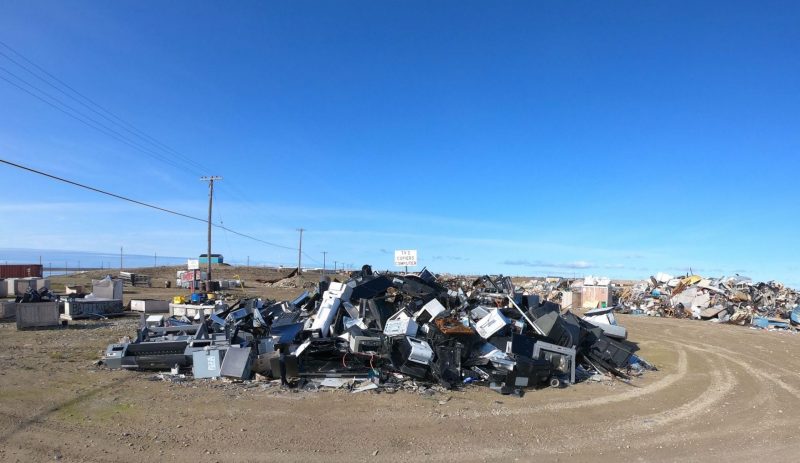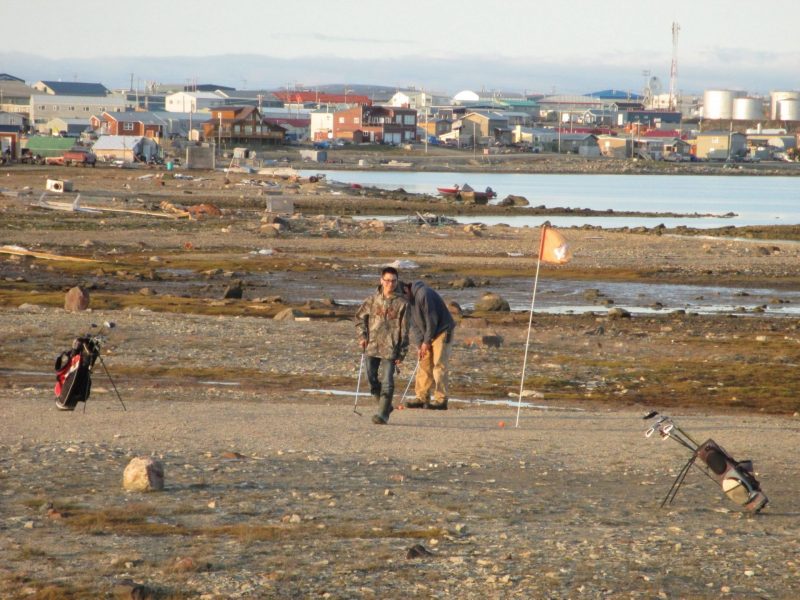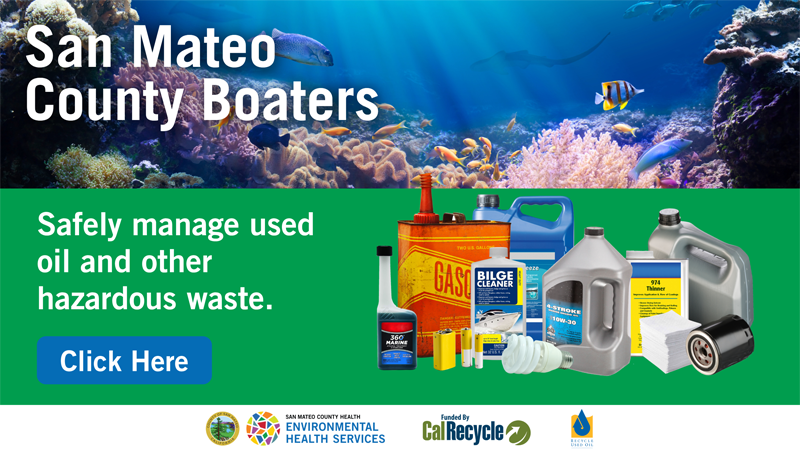
Painful to Watch, the Loss of ‘Eleonora E’
Couldn’t somebody have done something? Apparently not. The beautiful 162-ft schooner Eleonora E was launched in 2000 as a replica of the 1910 Herreshoff-designed schooner Westward. She was securely moored against a seawall in Port Tárraco, Tarragona, Spain, when a larger working-vessel’s engines appeared to get stuck in reverse. Eleonora E sank at the dock within 30 minutes.
According to a report in the Superyacht Times, the Maritime Rescue boat Punta Mayor was exiting the port when her main engines jammed in reverse. The crew stopped the engines and dropped two anchors to try to stop the boat.
These images on the Port Tarragona’s Twitter feed show the Eleonora E lying in approximately four to five meters of water.


There are always thousands of things that can go wrong, though usually the worst is averted. Not this time. Seeing a classic beauty like Eleonora E fall prey to a disaster like this is heart-wrenching.
Addendum: Thomas Sarlandie saw our story and sent a note saying, ” I don’t think the pictures of Eleonora E that are circulating now do a good job of showing how special she was. Please feel free to use this picture I took during the Caribbean 600 in 2017. I was on Isbjorn, a Swan 48 skippered by Andy Schell and Paul Exner. She passed us a few hours after the start. We will never forget…”
Thomas, thank you for sending the photo. We couldn’t agree more. It’s a stunning photo and beyond tragic to see such a beautiful yacht take such a devastating blow. Can she possibly be restored?

Good Jibes: Captain Anne McIntyre — The Life of a Bar Pilot
Welcome to Latitude 38‘s weekly podcast, Good Jibes. This week’s host, Moe Roddy, is joined by Capt. Anne McIntyre, who chats about being a bar pilot pioneer, navigating dangerous waters, and boating challenges. Anne is the business director of the San Francisco Bar Pilots, and was the first woman bar pilot on the Columbia River, which contains some of the most difficult passages you’ll find.

Hear how to work smartly and safely in a dangerous environment, become a bar pilot, and learn to lead from behind; the hardest part of navigating megaships; and what’s going on at the navigation bridge when you hear the danger signal.
This episode covers everything from bar pilots to life lessons. Here’s a small sample of what you will hear:
- Did Anne have any childhood experiences that prepared her for life in the maritime industry?
- What does a deck officer do?
- How did Anne learn the Columbia River?
- Did she ever have any experiences that scared or unsettled her?
- What major injury did she have?
- Why did she go back to graduate school?
- Is she responsible for taking care of the boats as well?
- Short Tacks: What’s the most important lesson Anne has learned in her professional career?
Anne commented, “Maritime careers are great careers. It’s something I just fell into and I would encourage anyone who even has a little inkling, to get involved. There are just so many opportunities out there on commercial ships, on tugboats, on research vessels — there are all kinds of vessels out there. And it’s a great industry with good-paying jobs.” If you’re looking for a maritime career you could follow Anne’s course with Cal Maritime in Vallejo, or start in the Latitude 38 Job opportunities section. There are great jobs around the world or right here on the California waterfront.
Learn more about Anne on LinkedIn and SFBarPilots.com.
Listen to the episode on Apple Podcasts, Spotify, Google Podcasts, and your other favorite podcast spots – follow and leave a 5-star review if you’re feeling the Good Jibes!
Enjoy Downwind Sailing With Walder Boom Brake
The innovative Walder boom brake — active safety at sea www.boom-brake-walder.com
Stan and Sally Honey, Richard Henry Dana and Bermuda
In the current issue of Latitude 38 we printed the letter below from Stan Honey, written after he and Sally saw our comment on re-reading Two Years Before the Mast. It’s a must-read. They mention Richard Henry Dana’s direct descendent, professional sailor Nick Dana, who hails from Newport, Rhode Island, which happens to be where the Honeys are right now as they prepare their Cal 40 Illusion for the Newport Bermuda Race starting on Friday.
Stan comments, “Sally and I loved re-reading Two Years Before the Mast on our trip on Illusion from SF to Rhode Island.”

“One bit of trivia that you likely know: Nick Dana, the widely sought-after professional sailor, is a direct descendent of Richard Henry Dana, as of course is his father, Charlie Dana, who until recently, owned Newport Shipyard in Newport, RI. Saltwater runs through that family.
“I’ve sailed with Nick on a number of boats including Comanche and Hanuman. Nick’s done a number of Volvo Ocean Races and is on the American Magic Cup team. Nick is one of the best seamen and shipmates that I’ve had the honor to sail with.
“Above is a photo of Comanche’s crew when we set the transatlantic monohull record in 2016, which still stands. The crew turned out to be remarkably international. Nick is the fifth from the left and only one of three Americans on an American boat. Nick’s ancestor would not have been surprised at all by the international crew, their good nature, and teamwork, but would have been astonished by the boat.”
Back to the present. The Honeys, along with West Coast crew Carl Buchan, Don Jesberg and Jonathan Livingston, are prepping for the classic 635-mile dash across the Gulf Stream to the island of Bermuda. There are over 200 boats registered to race, with two other Cal 40s, one from Long Island Sound and one from the Chesapeake, joining Illusion in the St. David’s Light Division. You can follow all the action on the Bermuda Race tracker starting at 1 p.m. EDT on Friday.
The Resourceful Sailor Attempts the Northwest Passage — Again
Usually when we hear from the Resourceful Sailor it’s to learn about his latest MacGyvering attempts aboard his Flicka 20, Sampaguita. Right now, however, the Resourceful Sailor is offshore, sailing from the USA to France. Before he set sail, he sent us the following update.
This summer, I will be attempting a west-to-east transit of the Northwest Passage as crew aboard a French-built aluminum Boréal 47 sailboat. The voyage, if successful, will begin in Anacortes, Washington, and conclude in Brittany, France, from early May to September. The vessel and owner were transiting the Northwest Passage in 2019, east to west, when I met them while doing the same aboard the 50-ft cold-molded cutter-rigged sloop Breskell. Since then, the global pandemic has thwarted much of the Boréal 47’s cruising plans, and it is time to return the boat to France.
The Arctic is a challenging space of ice, low temperatures, lack of services, and hungry polar bears. In 2019, Breskell’s owner and builder, Olivier Huin, un roi du bricolage (a king of DIY), The Resourceful Sailor and the rest of the crew teamed up to do what was necessary to get the boat from St. John’s, Newfoundland, to Port Townsend, Washington. I have previously written about some of the challenging situations and creative solutions: for instance, the installation of a crow’s nest, marlinspike seamanship, the adaptation of a tiller pilot to wheel steering, fashioning a headsail pole, and keeping gloves organized.
There is no monopoly on resourcefulness. During the 2019 transit, I met a sailor named Ross who crewed onboard the Czech Republic sailboat Snow White. They had some propulsion issues and needed to fly in parts immediately, but the incoming flights were all small craft booked to capacity with passengers and cargo for the short season. According to Ross, he called the airline, found someone with authority, and offered to write a story about the Northwest Passage for the airline’s in-flight travel mag. in exchange for their finding space for the parts on the next flight. I love the spirit, and apparently, it worked. If not, it could easily have been “game over” for the boat. They were able to repair it and successfully finish the passage.
The Arctic life is for the hardy and adaptable. Art, expression, and resourcefulness abound in their way, with people making do with what they have. Settlements have what the crew of Breskell referred to as “Arctic for Walmart:” well-organized rubbish piles outside town with “wares” awaiting repurpose.

Youth workshops teach machinist skills while producing local art. Dog houses have multiple rooms for baffling the winds. The Many Pebbles Golf Course in Cambridge Bay rocks — literally. In the Arctic, where supplies are both limited and expensive, subsistence living is still relevant, and the harvest is valued differently.


Previous success is no guarantee of future success. Having experience in the Arctic may only mean we have enough knowledge to be dangerous. The uncontrollable factors of weather and ice are a wait-and-see. The boats and the owners are very different from each other. Preparation is a big part of the process, and I hope we are doing all the right things. I still have much of the gear I used in 2019, which has gotten very little wear and tear through the pandemic. I am supplementing this with some new items I’d learned I wished I had. Are they right? Will it be enough? I’ll save that determination for afterward.

A smooth transit without a need for any Resourceful Sailor-ish techniques would suit me just fine but is unreasonable to expect. Not to mention the personal, geopolitical, meteorological, and pandemic uncertainties that could thwart the expedition. When offered the opportunity, I reviewed the rewards and consequences, and a 2022 attempt at the Northwest Passage felt like one I should take. I will keep my advice in mind and remember to keep the transit prudent and safe, and have a blast.
If you wish to follow The Resourceful Sailor on his voyage, there will be periodic updates on:
https://sailingwithjosh.com; https://www.facebook.com/SailingWithJosh;
https://www.instagram.com/sailingwithjosh; and https://twitter.com/SailingWithJosh
Learn How Your Actions Can Protect Our Bay, Ocean and Wildlife
Visit smchealth.org/boatoil for more boater information and resources. These tips are brought to you by San Mateo County Environmental Health Services (EHS). EHS works to ensure a safe and healthy environment in San Mateo County through education, regulation, and monitoring.

